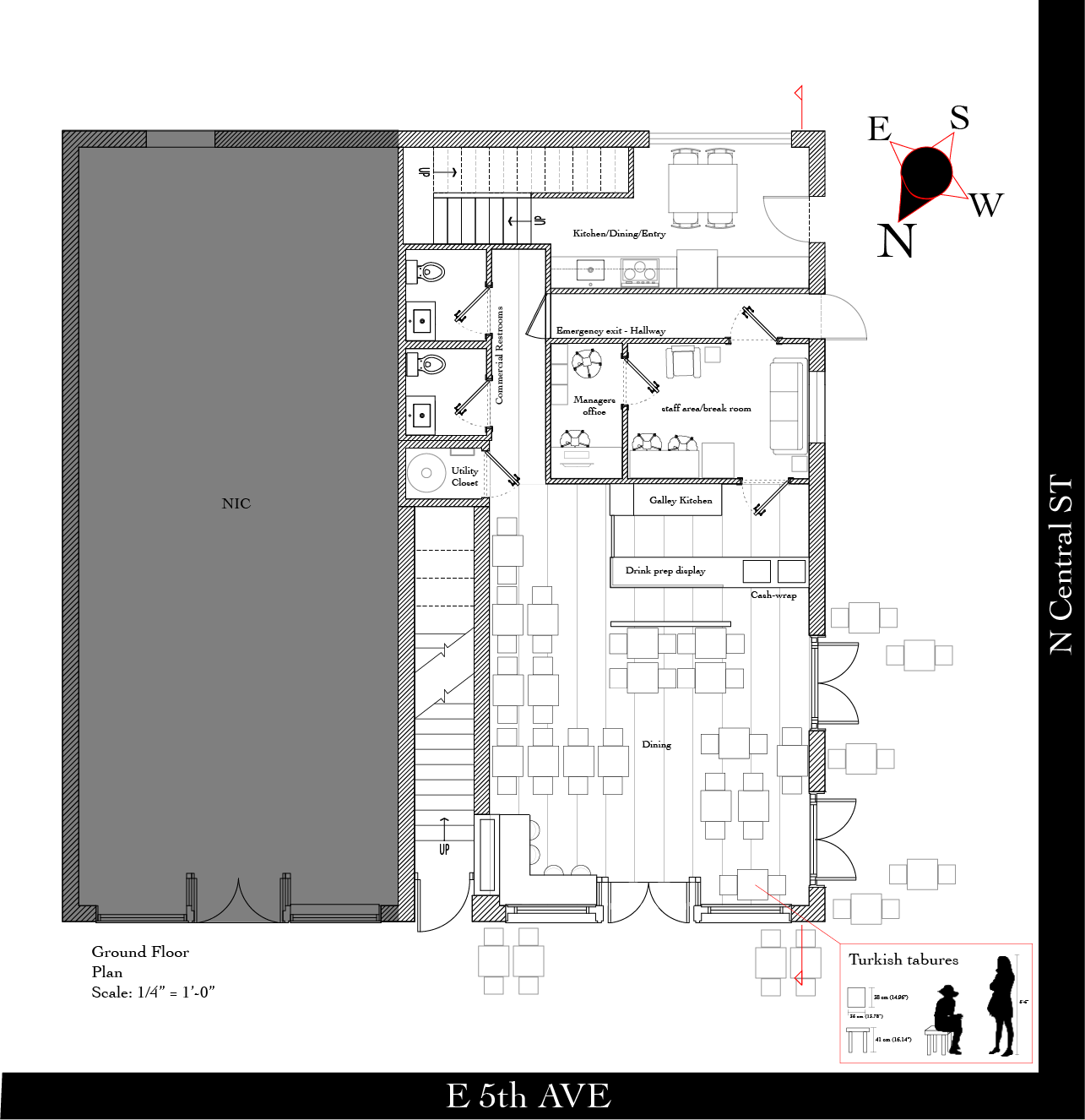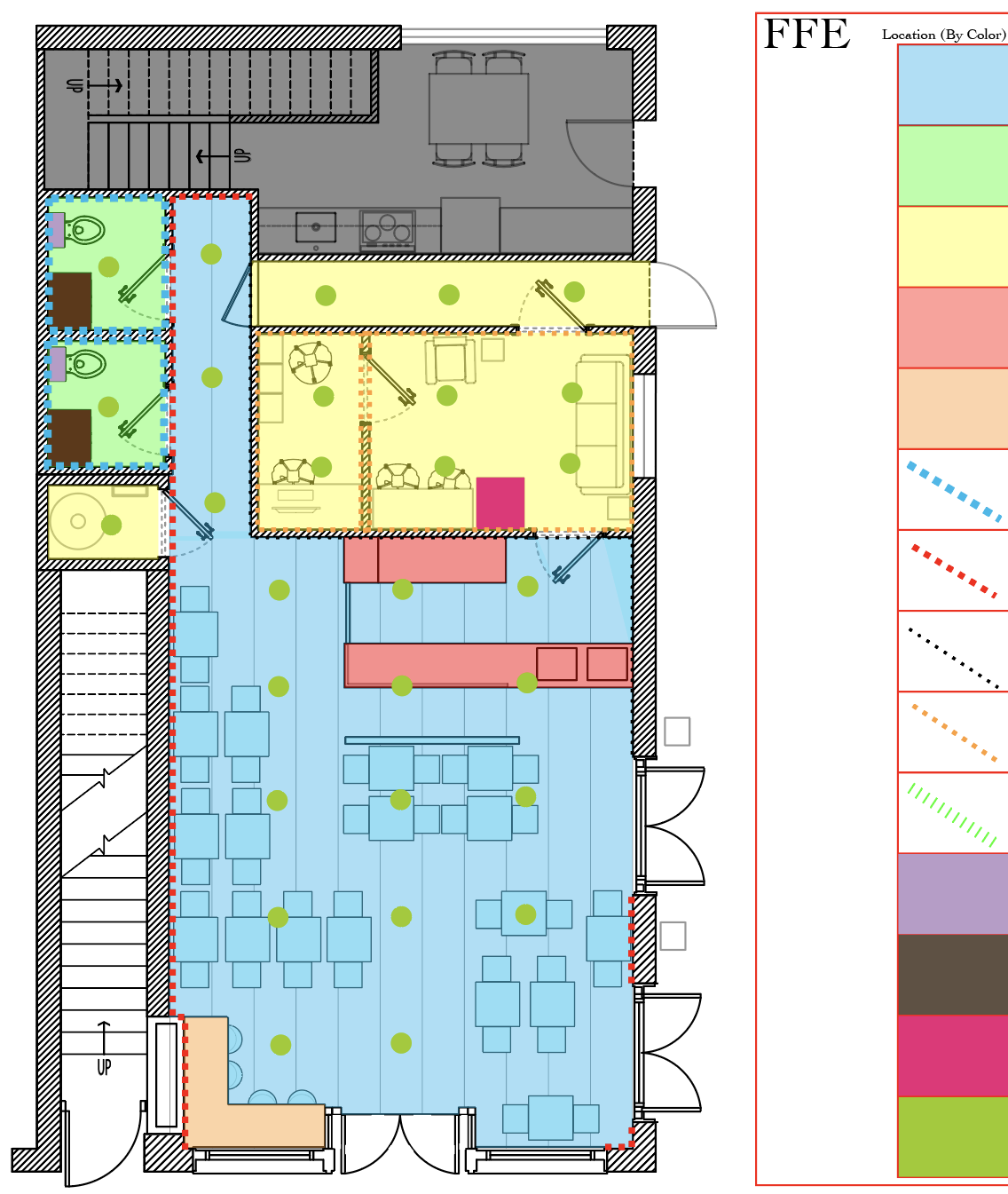YEAR 2 SEMESTER 2
CULTIVATING CULTURE - PROF. TIM DOLAN - SPRING 2023
Concept Statement:
Multu Kave (Happy Coffee) is a cafe space that is meant to be inviting and calm. The upstairs is a partnering business, a hookah bar and lounge. In many turkish coffee houses, hookah is a partnering detail to the coffee experience. Coffee houses were made as social spaces when, against religious reasons, a lot of Islamic and Muslim Turkish people would not go to bars or taverns serving alcohol. The hookah bar in this space is seperate: for the guests who do not wish to participate in both. The opening in the second floor to below provides connection between the spaces, but does not force integration. The hanging hot air balloon element is a celebratory nod to Turkey, as it is one of the (if not the) most famous place in the world for hot air ballooning. This is a fun visual element to inspire the playful, social, and fun environment of this space. Selection of materials is considerated in resepct to Turkish aesthetics and native materials.
Client Summary: Turkish Coffee
Cultural Ambassador: Professor Caglar Ayse Tas - Department of Psychology at UTK




History: Turkish coffee houses were created because alcohol was not accepted in the Islamic/Muslim religions, and taverns were not an acceptable place for them to socialize. Coffee houses became a space that was relaxed and accepted people from all different backgrounds and social classes. The coffee was affordable, but the slow nature it took to prepare gave people lots of time to sit and socialize.
In the meeting, the speaker from West Turkey discussed how culture impacts food, language, and attire. The discussion centered around Turkish coffee and its preparation in different regions. The suggestion was made to create a local, welcoming environment for a Turkish coffee shop rather than a fancy atmosphere. The conversation also touched on the increasing popularity of hookahs and the potential for incorporating a hookah area into the project.
POTENTIAL ACTIONS:
- Conduct research on the varying regional styles of Turkish coffee for a potential business
- Explore different ways to create a warm and welcoming atmosphere in a Turkish coffee shop
- Consider offering Turkish tea alongside Turkish coffee to cater to a broader customer base
- Research and gather more information about traditional Turkish coffee shops
- Look for pictures of hookah areas in coffee shops to see how they can be incorporated into the project's design
- Consider including tea or Turkish delight as additional elements to the coffee shop concept
- Brainstorm ways to make the coffee shop experience more authentic and traditional for customers.
Turkish Coffee : Finely ground coffee beans, cardamom, and sugar. Made in a cezve or ibrik, Turkish coffee is made over an even and singular heat source. First, fresh and filtered water is heated to a boil. Next, the ground coffee bean/spice mixture is put into the water without being put through a coffee filter. Then, sugar is then added directly to the hot mixture. Finally, this is served in a coffee cup usually with a small snack: such as tea cakes, turkish delights, or chocolate.

















